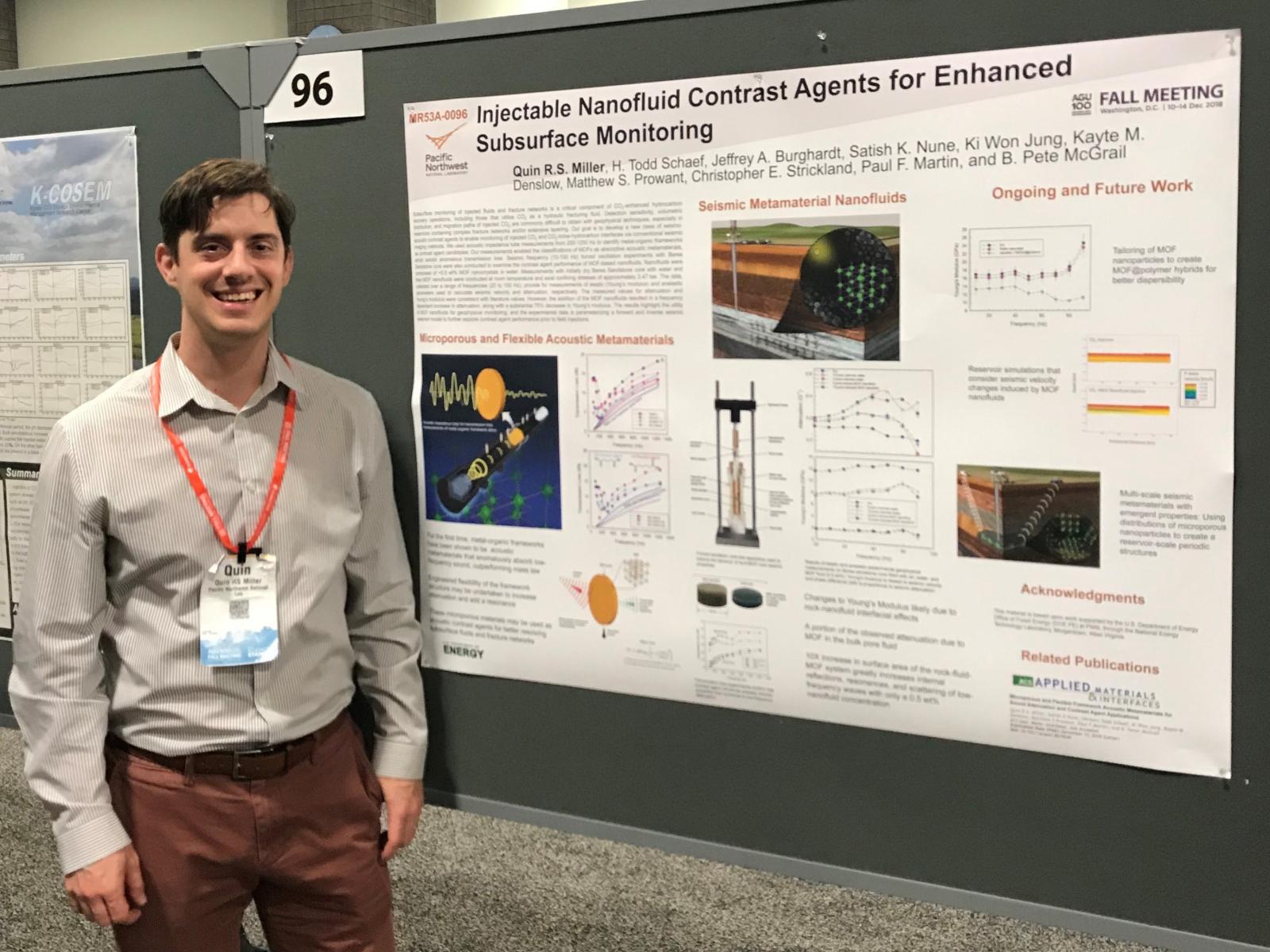Annals of a Future Geosphere
Geochemistry postdoc Quin Miller is making an impact

Quin Miller at AGU 2018
When Quin Miller was a middle school student in Kennewick, Washington, his parents opted for a different approach for “Take Your Child to Work Day.” Given Quin’s budding interest in science, they thought it might be neat if Miller could see the workplace of a family friend. That friend happened to be Michel Dupuis, a renowned computational chemist and at that time associate division director at PNNL. The visit, which included a tour of the Environmental Molecular Sciences Laboratory and multiple spectroscopy labs, sparked Miller’s imagination and helped catalyze his journey. The next year, Miller’s science fair project on experimental determinations of ion diffusion rates was recognized by the local American Chemical Society as the best middle school chemistry exhibit at the Mid-Columbia Regional Science and Engineering Fair.
Today Miller is a geochemistry postdoctoral research associate who was recently recognized for “exceptional contributions” to PNNL. The nomination criteria included productivity, innovation, dedication, hard work, and strong sponsor impact and visibility.
He may indeed have been destined to work at PNNL someday. But he didn’t really recognize PNNL as a destination until about midway through earning a bachelor’s degree in geology at Whitman College in nearby Walla Walla.
Maybe it was the mineralogy and geochemistry classes. Maybe it was making scanning electron microscope and X-ray powder diffraction measurements. But the hook definitely was set in March 2009 when he toured the Wallula Basalt Pilot Demonstration Project and PNNL’s labs. There, he met Todd Schaef, one of the PNNL scientists who have shown that deep underground geologic formations are a possible option for long-term storage of carbon dioxide, a greenhouse gas.
Upon graduation from Whitman, Miller contacted Schaef about internship opportunities, and was hired as a post-bachelors’ research associate to conduct geochemistry research. With that job came an important caveat: Schaef made clear that the young geologist would also be expected to publish results and pursue a graduate degree.
“It was great experience working with Todd,” says Miller, who cites J.M. Ledgard’s and John McPhee’s writings about Earth science with as much ease and authority as he would an esteemed colleague. “Having Todd Schaef show me the ropes: how to conduct research, how to publish, how to interact with people, helped me to put my foot in the door of geochemistry.”
Miller earned his doctorate in geology in 2017 at the University of Wyoming, studying with Prof. John Kaszuba. He began work as a PNNL postdoc in August that year.
Miller has studied how water and gases compete for access to internal and external clay surfaces at elevated pressures and temperatures relevant to geologic carbon sequestration and unconventional oil and gas production. He also seeks to understand the unique properties and reactivity of fluids confined by minerals or engineered materials in nanoscale dimensions, and will give a presentation on this topic at the 2019 American Geophysical Union Fall Meeting. He is currently investigating mineral transformations in interfacial water films with mentors Schaef and PNNL Lab Fellow Kevin Rosso.
Miller recently was elected to a three-year term on the Clay Minerals Society Council. The 2020 annual meeting—the society’s 57th—will be held at PNNL in June 2020.
Looking back on his early career, Miller says his path between Kennewick and the intersection of Battelle Boulevard and George Washington Way really wasn’t that linear. “I didn’t realize how special PNNL was until I left, and I’m happy for the opportunities it has provided.”
Published: November 1, 2019